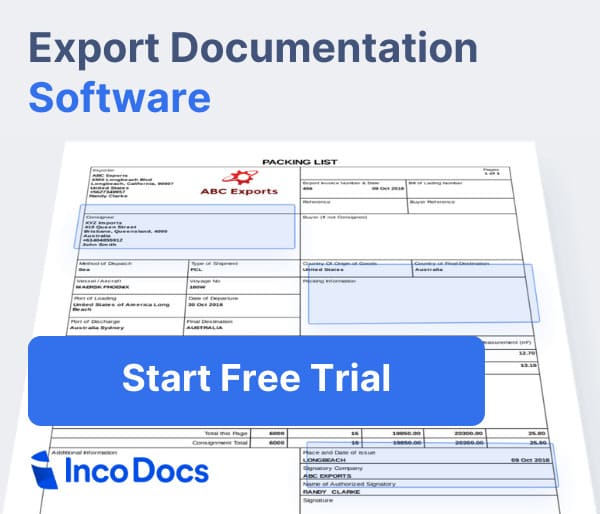If you’re importing products into your country and plan to on-sell them in the market, you must have a clear understanding of your landed costs, operating costs, profit margins and create a solid business plan on how you plan to on-sell your products in your market.
A clear sales and marketing plan should be created in advance, so that you can understand key metrics such as landed costs, profit margins, operating costs, cost of warehousing/storage, financing costs and more.
Understand the Landed Cost of Imported Products
Businesses must conduct thorough market research to have a good understanding of the landed cost of imported products in advance. This helps them to make informed decisions for their business. If a business is planning to import products and on-sell them in their market, then they must have a good idea of what the actual final landed cost is for each item.
Understanding the landed cost of imported products allows business to plan how much capital will have to be invested to purchase products and get them delivered through to location. Read more about how to calculate landed costs here.
Understand Sell Pricing and Profit Figures
When the landed cost of the products has been calculated, businesses can work out their sell pricing, i.e. how much these products can be sold for in the target market. This will give businesses a good understanding of the profit that can be made and gives an insight into the return on investment (ROI) if they were to import and on-sell the products.
To work out sell pricing, importers can apply a markup or margin percentage to the cost price. It’s important to note that markup and margin are 2 completely different methods of calculations which must not get confused. Read more about Markup Vs Margin here.
Understand Operating Costs
Setting your sell pricing gives you your gross profit figures. Once you understand gross profit figures, you can look at all of the different operating costs involved in your business, to get an understanding of net profit figures. There will be several costs involved in getting your product to market, such as:
Storage & Warehousing Costs
Storing products over a period of time will cost your business. You could use your own company owned warehouse, or work with a 3rd Party Logistics provider 3PL to take care of storage and dispatch.
3rd party warehouses will charge fees for various services, such as receiving and unload products/containers, for on-going storage charges and more. Make sure that you receive a detailed list of fees that will be incurred throughout the receival and storage process.
Working Capital Costs
Usually when importing products, most or all of the product and associated shipping & import costs will have to be paid in advance. Depending on the payment terms agreed with suppliers and logistics providers, usually it involves paying for the products and logistics costs before and/or after the goods are shipped and before they arrive into the country of import. Read more about International Payment terms here.
Additionally, you should understand the approximate time it will take between paying suppliers and selling your products in the market, your Cash Conversion Cycle. The Cash Conversion Cycle is the amount of time a company takes to convert funds that were invested in production and sales to cash.
Usually there is a manufacturing lead time + shipping lead times + the time it takes to sell your products + the time it takes to actually get money back into the bank. It’s not uncommon that this timeframe can be 60-120 days.
So if you are paying suppliers and shipping lines or freight forwarders in advance, that requires a cost to finance an asset. This could be funded with cash or debt resources, both of which bring a cost to a business.
A business having access to cash assets, rather than relying on debt resources and credit accounts can greatly help to mitigate the various risks associated with its operations. Having ‘cash in the bank’ provides immediate liquidity in times of unexpected downturns or when unforeseen expenses arise.
The decision to finance as asset using cash or debt depends on your financial situation, goals and risk tolerance. Read more about financing an asset by Cash or Debt here.
Sales & Marketing Plan & Costs
An importing business will not be successful unless their products or services can be consistently sold to customers at sustainable profit margins over a period of time.
Planning how to on-sell products into the target market can be quite an art, as there are various factors and options involved that may bring success with different sales and marketing strategies.
There are several risks involved in selling products in a domestic market. Economies and business is always evolving, a changing landscape can have an impact on sales and distribution.
Some factors to consider include market saturation & overcrowded markets, changing consumer preferences & demand, changing regulatory environments, currency exchange fluctuation and landed costs, counterfeit products and Intellectual Property rights.
Think through all of the potential sales and marketing channels that can work for your business. There are a variety of B2B or B2C online and offline sales and marketing channels that can help you achieve your goals. Utilizing a variety of sales and distribution channels will allow companies to keep selling their products should one channel experience negative impacts.
Each sales and marketing plan will incur various costs, so be sure to thoroughly research and understand the cost of the sales and marketing strategy to your business in advance. Read a list of 99 Marketing channel options that can help to drive your sales.
Invest in Software Processes
Today there are many new cloud-based software solutions that allow import and export companies to streamline their processes, increase visibility, allow teams to work remotely and to grow sales.
It’s also never been easier and cheaper to upgrade or change to new systems. Nowadays, SME businesses have access to more powerful tools than ever before, at a fraction of the price of traditional Enterprise software. So with cost of change and adoption being low, the only thing in your way is finding the right software for your business. Read this list of new software to help importers and exporters.
Conclusion
In conclusion, having a solid sales and marketing plan in place in advance will give your business the best chance to succeed. There are so many different factors to research and consider. Take the time to do extensive research, seek professional advice and speak to as many different parties as possible to put together a comprehensive plan.
Documenting everything, drafting and communicating a plan will help to mitigate risk and give your business the best chance to thrive in global trade.




